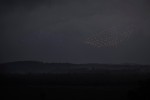Search
Using the filters to the left, click your selection, it will become bold and filter the results, click it again to remove that filter.
QNG23 Challenge Outcomes This post continues a series on quantum technologies. It details outcomes and findings from the Army Quantum Next Generation Minesweeper Challenge 2023 . Landmines and buried ordinances pose a significant danger in warzones, extending through active conflict and lingering as a threat in the aftermath. Finding and clearing landmines is both a valuable military capability and a humanitarian tool. Existing methods of minefield clearance are slow and dangerous, relying on ground teams …
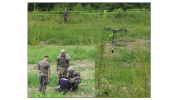
Executing What Has Been Started Eighteen months ago, Army released its capstone narrative, ‘Army’s Contribution to Defence Strategy’ , which defined the current and future operating environment as well as its vision, frameworks and culture. These documents and Army’s modernisation design principles of Connected, Protected, Lethal and Enabled seek to balance the current and expected readiness demands of being both ‘Ready Now’ and ‘ Future Ready’ . Strategic Environment The Defence White Paper states the …
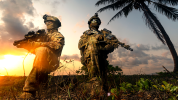
With the advancement of technology and the accelerated rate of disruptive engagements, militaries are exploring swarm-related capabilities across several lines of effort, spanning from concepts to research and physical trials. In response, this AARC Occasional Paper outlines the current state of swarm and counter-swarm research and technologies through a high-level review of academic, industry and coalition partner efforts. … Swarming and …

Editorial Despite the ADF’s withdrawal from operations in Afghanistan, the Army’s operational tempo remains high. Several important strategic policy documents were released over the past year, and the maintenance of professional discourse is vital for a military force to ensure it is ready for future operational challenges. This edition of the Australian Army Journal is an integral part of our past, present, and future contributions to the discourse on the profession of arms. In the first article of this …
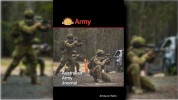
An Enabled 1st (Australian) Division A Division is one of the four best commands in the Service-a platoon, a battalion, a division, and an Army…A division, because it is the smallest formation that is the complete orchestra of war and the largest in which every man can know you. [i] Field Marshal Viscount Slim On 07 July, the Chief of Army (CA) stated, ‘We are setting conditions today to enable Army’s transformation. We are reorganising to reinforce our division headquarters to better command and control …
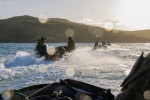
An Enabled 1st (Australian) Division Part One of this article outlined the historical structure of an Australian divisional. This structure was reviewed in light of the Chief of Army’s July 2023 pronouncement regarding the 1st (Australian) Division. The key capabilities currently missing are the enabling brigades that empower the division to conduct independent operations. The capacity to conduct independent operations is an important requirement due to the contemporary threat environment posed by large …
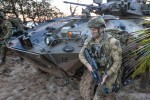
Army’s approach to accelerated preparedness In October, the AARC launched its spring series ‘ Short Thoughts Competition ’ on Army’s approach to accelerated preparedness. The purpose was to encourage authors to think about the activities Army can undertake now to achieve success in future and the types of capability that would best prepare land forces for future operational tasks. In a resource constrained and competitive workforce environment, our contributors specifically addressed the opportunities for …
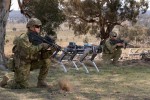
Introduction Human soldiers are the army’s most valuable resource. A lot of money is invested in their training. In order to minimise their exposure to risk, where possible they should be replaced with inexpensive robots. A good example is collecting intelligence at observation posts, where human soldiers tend to get tired and bored, and need a reliable supply of food, water and electrical energy (e.g. batteries or solar cells). Robots could also be used to support dismounted soldiers. In this application …

Introduction The recent Defence Strategic Review (DSR) has brought to light significant challenges previously unnoticed by defence commentators and the broader Australian public. Two key tenets of the DSR are concerns about climate change, and the need for an asymmetric capability, which in turn pose questions about our capability to meet domestic emergencies and defence of our sovereignty. [i] The implementation of existing and emerging autonomous technologies at scale will contribute significantly …
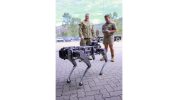
Smarter Deception Introduction In releasing the Defence Strategic Review, the Australian Government announced a pivotal (and not unforeseen) clarification in Australia’s defence strategy. Notably, the Review directs Australia to adopt a strategy of denial intended to defend Australia by influencing an adversary’s ‘state of mind’ such that it changes ‘its risk assessment and, therefore, decision-making’. [1] However, the Review also identifies the necessary but ambitious related capability reform will need …
